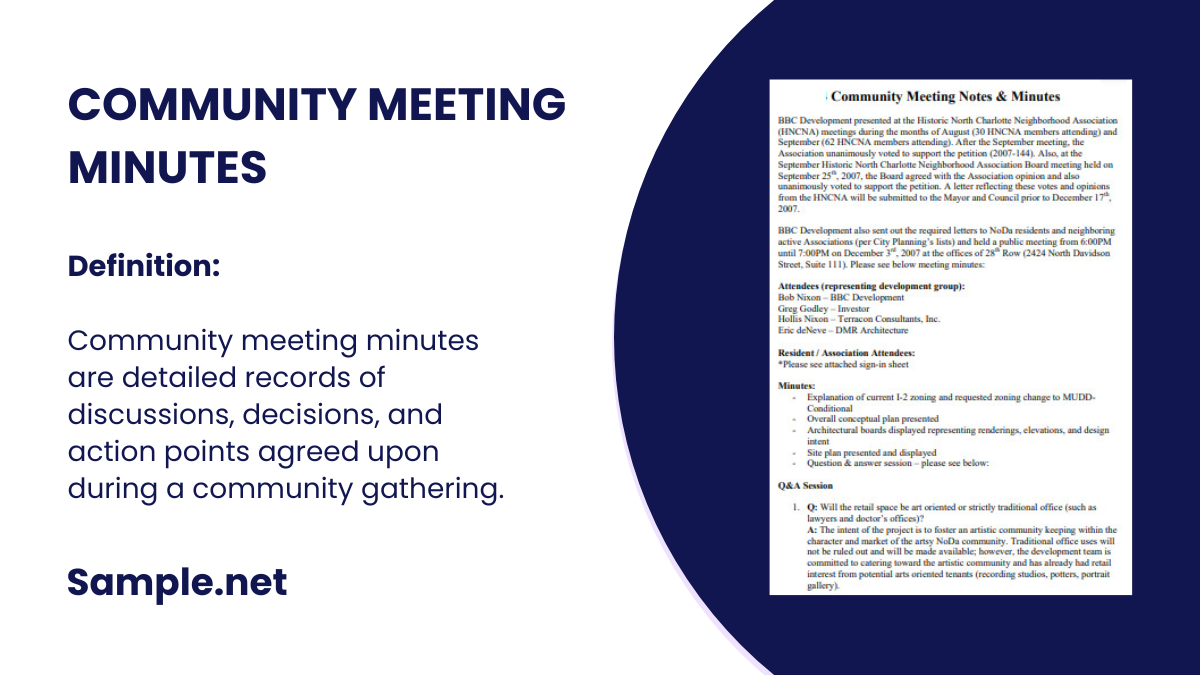Community meeting minutes are detailed records of discussions, decisions, and action points agreed upon during a community gathering. They ensure that all participants have an accurate summary of the…
continue reading
36+ SAMPLE Weekly Meeting Minutes
-

Weekly Meeting Minutes And Progress Reports
download now -
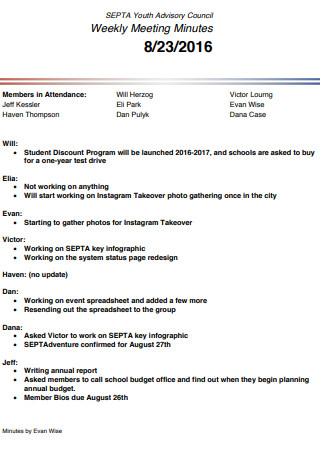
Advisory Council Weekly Meeting Minutes
download now -
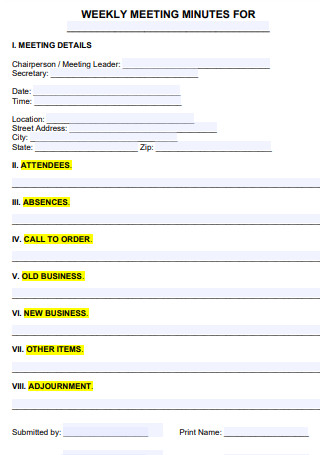
Weekly Meeting Minutes
download now -
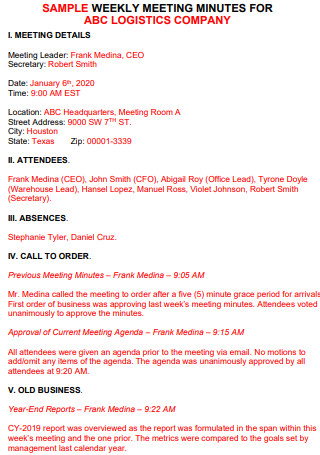
Sample Weekly Meeting Minutes
download now -
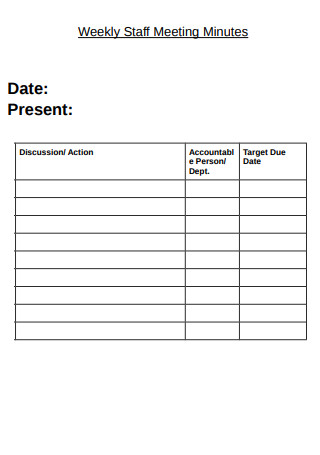
Weekly Staff Meeting Minutes
download now -

Rotatary Club Weekly Meeting Minutes
download now -

Weekly Status Meeting Minutes
download now -
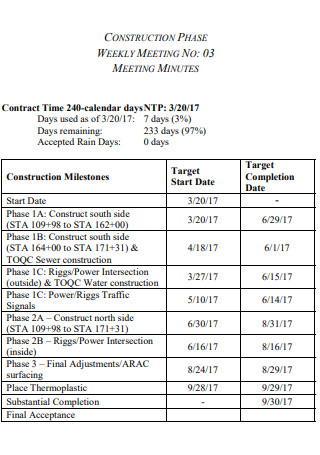
Construction Phase Weekly Meeting Minutes
download now -
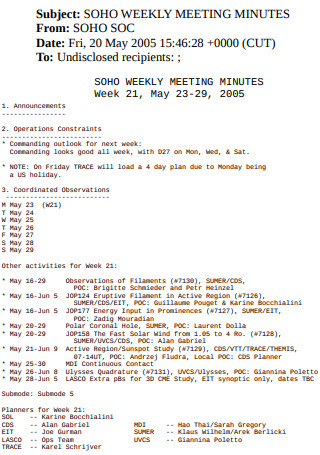
Campaign Weekly Meeting Minutes
download now -

Bi Weekly Partner Meeting Minutes
download now -
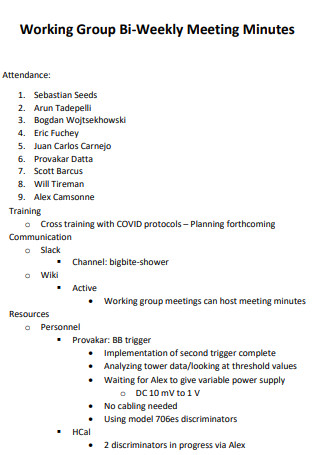
Working Group Bi Weekly Meeting Minutes
download now -
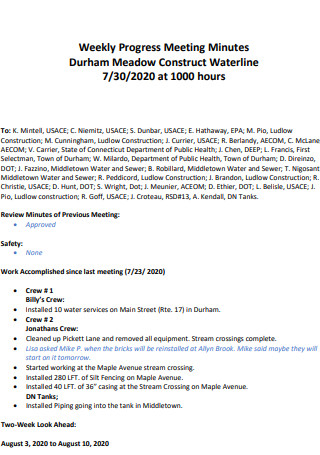
Weekly Progress Meeting Minutes
download now -
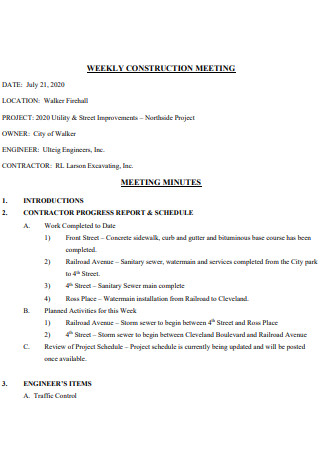
Weekly Construction Meeting Minutes
download now -
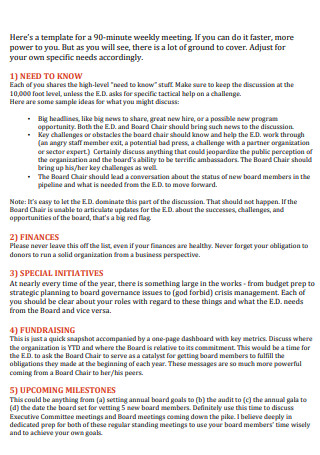
90 Minutes Weekly Meeting
download now -
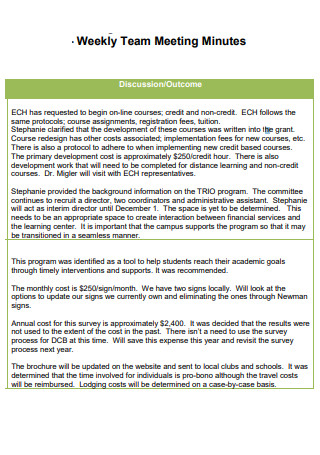
Weekly Team Meeting Minutes
download now -
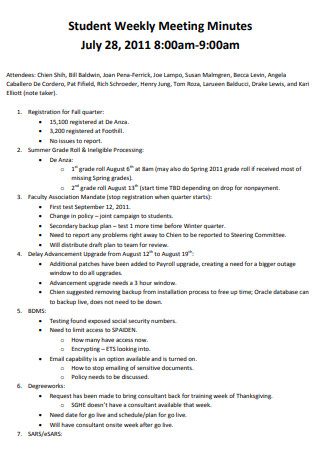
Student Weekly Meeting Minutes
download now -
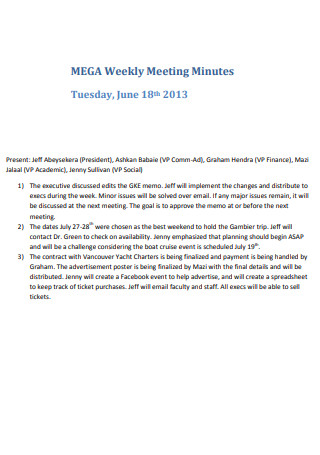
Simple Weekly Meeting Minutes
download now -

COVID?19 Weekly Meeting Minutes
download now -

Board of Directors Weekly Meeting Minutes
download now -
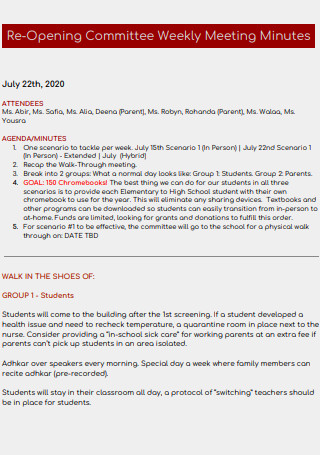
Re Opening Committee Weekly Meeting Minutes
download now -

Weekly Call Meeting Minutes
download now -
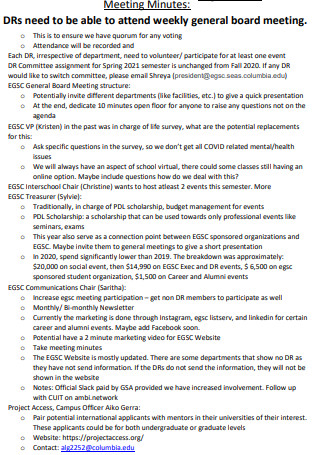
General Weekly Meeting Minutes
download now -
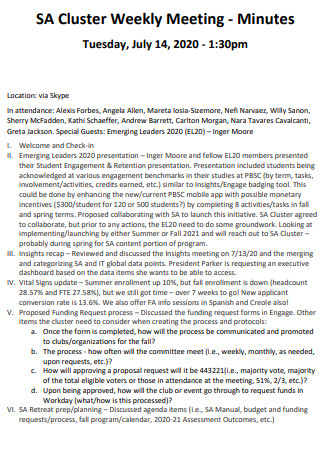
Cluster Weekly Meeting Minutes
download now -
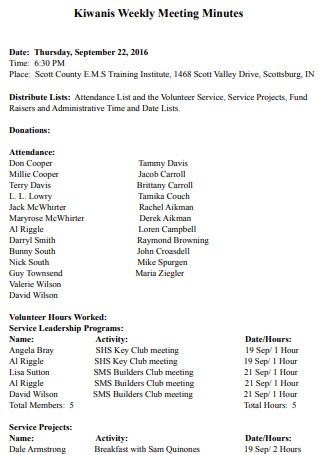
Weekly Meeting Minutes Template
download now -
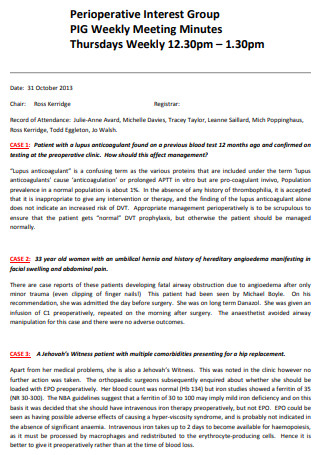
Perioperative Weekly Meeting Minutes
download now -
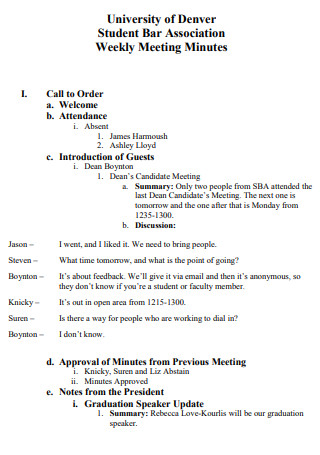
Student Bar Association Weekly Meeting Minutes
download now -
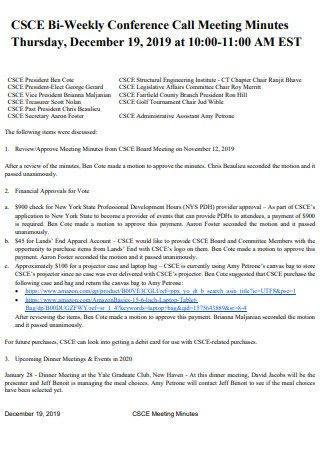
Bi Weekly Conference Call Meeting Minutes
download now -

Weekly Construction Progress Meeting Minutes
download now -
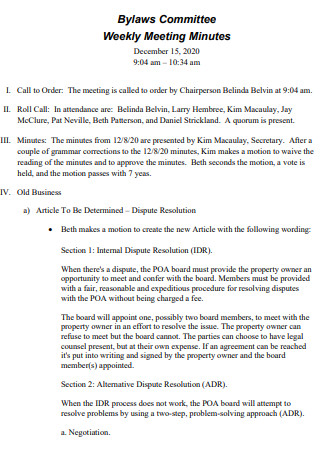
Bylaws Committee Weekly Meeting Minutes
download now -
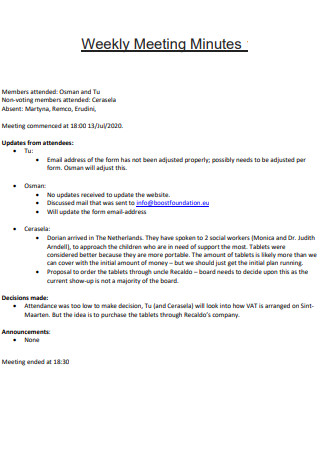
Weekly Meeting Minutes Example
download now -
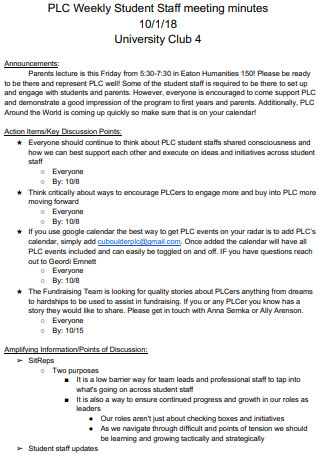
Weekly Student Staff Meeting Minutes
download now -
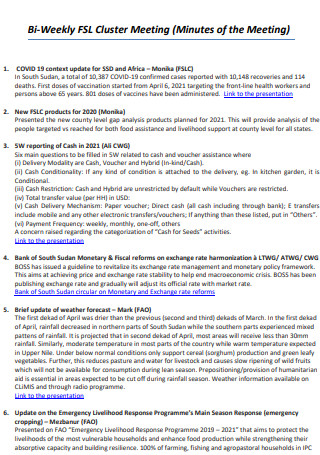
Bi Weekly Cluster Meeting Minutes
download now -
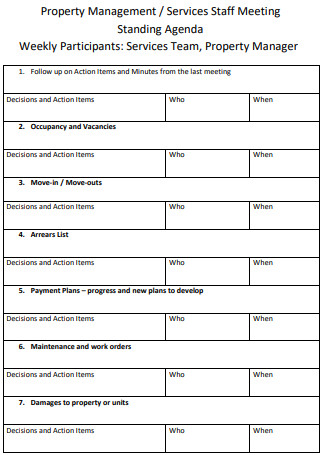
Weekly Services Staff Meeting Minutes
download now -

General Assembly Weekly Meeting Minutes
download now -
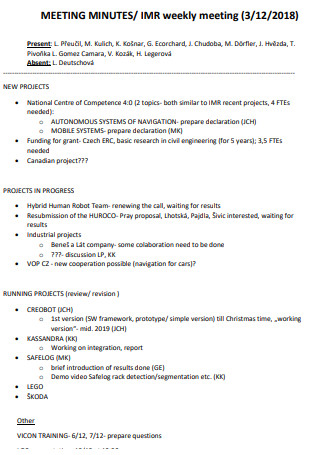
Basic Weekly Meeting Minutes
download now -
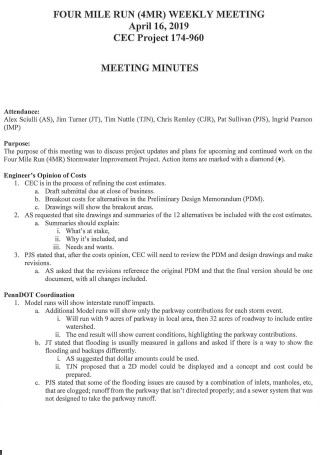
Four Mile Run Weekly Meeting Minutes
download now -
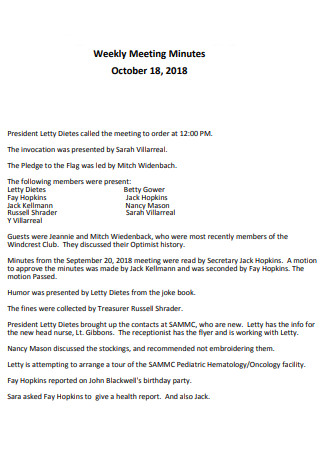
Weekly Meeting Minutes in PDF
download now
What Are Weekly Meeting Minutes?
When you hear the word “meeting” and “minutes,” for sure, you have a brief understanding of what meeting minutes will be about. It is a written document that helps inform and remind people about what was discussed the whole time spent in a meeting. And in the case of weekly meeting minutes, you focus on creating the meeting summary of a weekly meeting rather than making daily or monthly meeting minutes. And instead of writing everything that happened in a meeting word by word, only the important parts will be tackled in the meeting minutes. Thus, less relevant discussions are left out.
According to MeetingKing, around $37 billion is spent on unnecessary meetings every year.
Also, Cleverism pointed out that 37% of meetings were unproductive or had no value to a company.
Why Should You Create Weekly Meeting Minutes?
The weekly meeting minutes document is pivotal since it can describe whatever happened in a business conference from what topics were discussed, who were the team participants, what decisions were finalized, and other significant factors. And that data would be useful to remind people of the important instructions and details, in case some factors were forgotten. Besides combatting forgetfulness, weekly team meeting minutes would help absentees. Those who were unable to attend project meetings can base on the meeting minutes to catch up easily.
Also, weekly meeting minutes would help companies monitor if the time spent for meetings was productive or not. Based on a report by Cleverism, 37% of meetings had no value to a business or were unproductive. On that note, $37 billion is spent on unimportant meetings yearly. Hence, companies shouldn’t be too complacent in giving tons of meetings, especially when nothing important happened through such meetings. Expect dismal work production and slow progress that way. And if weekly meeting minutes will be required, those who wish to waste time cannot easily do since something important must be brought up.
The Great Eight: Elements of Weekly Meeting Minutes
While you already know how important the weekly meeting minutes document is, take a step further by familiarizing what specific parts make up these meeting minutes. Although companies can set their own format and structure for the meeting minutes, standard weekly meeting minutes would have the following significant parts:
How to Make Proper Weekly Meeting Minutes
Practically, a weekly meeting minutes document is not just something you can create in a minute. But with a weekly meeting minutes template and a detailed guide on how to create it promptly, you can ace the process conveniently. And these are the steps you need to be reminded of to craft weekly meeting minutes properly:
Step 1: Opt for Your Preferred Weekly Meeting Minutes Template
You already learned the definition, importance, and elements of the weekly meeting minutes. But have you checked out every sample weekly meeting minutes template enlisted in this post? Be sure to explore every sample template from an informal meeting minutes template, easy-to-use minutes of meeting template with action items, and so much more. Opt for the best sample you can find so you never have to take too much time making one from scratch.
Step 2: Always Take Notes Immediately and Record During Meetings
If you are the scribe or secretary in a meeting, be sure to take out your notebook and pen to take notes pronto. Also, you can use your phone to record the audio or video of the meeting. Notetaking is crucial because the data you have written will serve as your reference page on what to write in the weekly meeting minutes later on. And it doesn’t matter if there are grammatical errors or incomplete sentences there because notes are still your draft. Just make sure you covered enough data for your reference.
Step 3: Recheck and Outline Your Notes
After taking notes and recording the video or audio, it is time to recheck everything. A tip is to read the notes you have taken and compare them to the recorded audio or video earlier. Check if you wrote the correct details and change any errors you might find. An example is when you misheard certain words that the gist of what was discussed in the notes was quite different from the audio you played. Also, begin outlining your notes by highlighting the important points; don’t expect all your notes to be written in the final meeting minutes.
Step 4: Brief but Sufficient Details Are a Must
Indeed, the weekly meeting minutes contain the meeting summary. But it is not all about summarizing the meeting because you have to put enough relevant detail but in a succinct manner. It is helpful to write a detailed weekly meeting minutes document but if the unessential parts are still there, keep it briefer. The key is to be straightforward with your words, especially when that is much easier to read to as well.
Step 5: Organize Your Meeting Minutes Design and Format
One of the critical ways to ensure you come up with an easy-to-follow weekly meeting minutes document is to arrange your data and organize your document’s layout carefully. You already know that the sample weekly meeting minutes template is editable. So take advantage of that element by editing the document’s format and design. You can arrange the details by adding graphs and charts, enumerating your data instead of writing whole paragraphs, and other creative ways.
Step 6: Use Simple Language
Reread the written details and observe how your language and tone could be portrayed. Be sure to sound professional but easy to understand. That means simple English is already acceptable and you don’t have to write complete sentences like a long book report if you are merely listing or enumerating information. It is crucial that whoever reads the weekly meeting minutes should understand its message anyway so there is no need to complicate things.
Step 7: Add Supporting Files or Attachments
Does your weekly meeting minutes document need some attachments or supporting documents? Insert them if they are important. It could be photos from a PowerPoint presentation, videos of a project, or the budget calculator‘s tabulated results. But if you think the weekly meeting minutes have said enough and have given an apparent message already, you need not attach supporting files.
Step 8: Print or Send Copies of the Weekly Meeting Minutes
When you are done with the process, allow the meeting chairperson to check and update your work. After the chairperson’s evaluation and approval, you can proceed to print the weekly meeting minutes and submit a copy to each absentee or attendee. Or, you can save paper by sending copies of the weekly meeting minutes as emails. Just make sure you got the email addresses of participants to send the file right away.
FAQs
What do you include in the weekly meeting minutes?
Weekly meeting minutes likely have the participants’ details, meeting agenda, statement of purpose or objective, action items, calendar, ownership, instructions, and supporting documents or records.
What is the common weekly meeting minutes format?
Weekly meeting minutes are generally written in the past tense form. And since it should be brief but concise, write in an active voice. Passive voice and complex sentences are discouraged. Also, use expressions such as the chairperson called to order, the chairperson adjourned, the members agreed, etc.
How do you plan a weekly meeting?
Setting a meeting can be stressful for first-timers. But it is easy when you follow these tips:
- Prepare a specific weekly meeting agenda.
- Decide if a personal or virtual meeting is more appropriate.
- Set the timeline of the meeting; avoid wasting time.
- Set the meeting as optional for members who still have important businesses.
- Set a rotation schedule and rotation assignment for who runs the next meeting.
- Most importantly, be prepared.
A home construction project requires a project blueprint, security plan, architectural design, or a complete list of engineering or construction tools and equipment to run seamlessly. And the same can be said about weekly meeting minutes where you need a carefully processed document that will be useful for attendees and absentees to learn the essential points of every weekly meeting smoothly. And to ensure that you can document the said meeting minutes easily besides taking notes, use a dependable template in doing so. Download sample weekly meeting minutes now!
